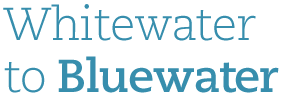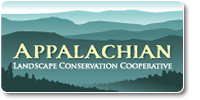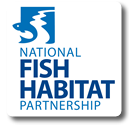Living Shoreline - Little St. Simons Island, GA.
| Project Start Date | |
|---|---|
| Project Leader | |
| Organization |
This project removed a failing bulkhead on Little St. Simons Island, GA and installed a living shoreline in its place to provide stream bank stabilization, habitat for eastern oysters, and essential fish habitat.
Background:
Little St. Simons Island is a privately held barrier island along the coast of Georgia accessible only by boat. As such it is a very pristine island with limited and controlled access. Since 1979 the island has been open to the public by appointment. In the 1920’s to 1930’s a bulkhead, approximately 370 feet long, was installed on Mosquito Creek on Little St. Simons Island. Little St. Simons Island has eight naturalists on staff and they provide a variety of educational experiences to the public. The island was recently awarded the Green Globe 21, a global benchmarking, certification and improvement program for sustainable tourism and travel. The goals and objectives that Little St. Simons Island has adopted are: “To provide the highest level of guest enjoyment and appreciation for the environment while protecting and preserving its resources.”
 The bulkhead in question was last repaired in 1990s and was beginning to fail. Instead of replacing/repairing the current bulkhead Little St. Simons Island, LLC was interested in the construction of a living shoreline and was responsible for the removal of the bulkhead and grading of the creek bank. Hard structures, such as bulkheads, can increase the rate of coastal erosion, remove the ability of the shoreline to carry out natural processes, and provide little habitat for estuarine species (NOAA 2011). The area to be restored would add an estimated 278m2 of oyster shell to Mosquito Creek. Bagged oyster shell would provide a hard structure for oyster spat to adhere to, provide essential fish habitat, and help water quality thorough increased filtration capacity.
The bulkhead in question was last repaired in 1990s and was beginning to fail. Instead of replacing/repairing the current bulkhead Little St. Simons Island, LLC was interested in the construction of a living shoreline and was responsible for the removal of the bulkhead and grading of the creek bank. Hard structures, such as bulkheads, can increase the rate of coastal erosion, remove the ability of the shoreline to carry out natural processes, and provide little habitat for estuarine species (NOAA 2011). The area to be restored would add an estimated 278m2 of oyster shell to Mosquito Creek. Bagged oyster shell would provide a hard structure for oyster spat to adhere to, provide essential fish habitat, and help water quality thorough increased filtration capacity.
Completed
Construction:
Oyster shell and shell bagging supplies were delivered in Fall 2012 and additional shell arrived in Winter 2013. In total 4,875 bushels of oyster shell (11,900 bags) were used for the shoreline. Six loads of shell were ordered, five from grant funds and one by GA-DNR CRD for a total of 4,500 bushels (11,000 bags), an additional 375 bushels was bagged (900 bags) from oyster shell present on LSSI that had been collected from past oyster roasts. Shell was bagged prior to construction and by AmeriCorps during construction. Shell was delivered to the Hampton Point Marina and St. Simons Island and was bagged. Bagged shell was then loaded onto a barge owned and operated by LSSI and transported to Little St. Simons Island.
Removal and installation of the living shoreline started in February 2013 and was completed in
June 2013. Construction took longer than anticipated due to rainy weather. The bulkhead was
removed in sections and then immediately sloped. Once the bank was sloped, a tow of rubble
concrete was placed at the base to provide support for the oyster bags. The slope was then
covered with a geo-textile grid and the first layer of shell bags laid in place to prevent erosion to
the exposed stream bank. Bags were laid to an elevation of 1.3 m above the mean high
tide line. The layer of the geo-textile grid was then wrapped and brought back over the top of the first layer of oyster bags. The geo-textile was used to tie the first layer of shell bags together.
Rebar hooks approximately 4 ft long were spaced every three feet up the slope (vertically) and
every five feet parallel to the creek (horizontally) to secure the oyster bags to the bank.
Once the bulkhead has been removed and the first layer completed, a second layer of bagged
oyster shell was laid over top and rebar hooks were pushed flush with upper layer of bags. The
first layer of bags was completed in April 2013 and the second layer of bags was completed by
the end of August 2013. Placement of bagged shell on the reef was handled by the contractor,
instead of volunteers as we had planned, to ensure that bags were placed correctly.
 Planting
Planting
The upland area adjacent to the bulkhead had been planted with native grasses and plants by LSSI previously and the Muhly grass and sea oxeye daisy present was removed, with the help of volunteers, prior to construction and were held on site at LSSI to be used once the living shoreline was complete. The landscape plans drawn up by Thomas Angel called for marsh plants to be incorporated into the slope of the living shoreline in addition to the adjacent upland. Plants were sourced through a local nursery and plants started to arrive to the site from March 19 - April 2, 2013, and were planted as soon as construction activity allowed. A total of 1,820 plants comprised of 18 species were planted. The majority of plants, 1,658, were planted in the spring along with the Muhly grass and Sea oxeye that had been saved. An additional 162 plants were purchased in January 2014 to replace some plants that had died due to environmental factors, over grazing from deer, or to fill in areas.
Project Outcomes/Monitoring:
During (First figure) and After (Second Figure) construction and planting.


Pre Construction Bio-Monitoring Methods:
Initial site characterizations was conducted in March 2012 prior to any earthmoving.
 A survey to digitally map the distribution of current intertidal Crassostrea virginica reefs and shoreline vegetation within the sites boundaries was done to calculate the pre-existing areas of habitat in square meters by species. The existing oyster populations were characterized to examine spatial patterns in terms of intertidal zonation and along the length of the delineated study areas shoreline. The existing vegetation was also characterized.
A survey to digitally map the distribution of current intertidal Crassostrea virginica reefs and shoreline vegetation within the sites boundaries was done to calculate the pre-existing areas of habitat in square meters by species. The existing oyster populations were characterized to examine spatial patterns in terms of intertidal zonation and along the length of the delineated study areas shoreline. The existing vegetation was also characterized.
Prior to construction the stream side part of the bulkhead was dominated by mud. Two Spartina
alterniflora stands covered 53m2 and one oyster reef 11m2 were present. After construction the living shoreline measured 92m long and 3-6m wide and shell bags covered an area of 414m2 and the natural reef found before construction was left intact for a total of 425m2 of oyster shell. The two spartina stands present before construction were left in place and a four additional plots were incorporated into the slope of living shoreline for a total area 85m2. Two plots of sea oxeye were added to the shoreline and cover an area of 25m2. This increased the total area of oyster shell available by 414m2 and 33m2 of spartina and 25m2 of sea oxeye. The extent of live oysters present on the reef covered the lower portion and covered 158m2.
Two small areas of erosion were noticed at the transition from the bagged shell to the upland that coincided with areas where runoff drained from the upland. Additional bags and soil were added to these areas and these areas continue to be monitored. The erosion also occurred early after construction before plants had time to get established. Dr. Jackson at Georgia Southern University has a 3d ground LiDAR system agreed totake images of the living shoreline with his equipment on a bi-annual basis to monitor the site.He was able to visit the site in the fall, but images are not yet available.
- Oyster recruitment monitoring was initiated in April 2012 and concluded in October the end of the 2012 spawning season. This was conducted by the Little St. Simons Island staff and characterized the temporal and spatial availability of oyster spat. Three were monitored along the length of the bulkhead.
Prior to construction no oysters were observed within any of the quads (Table 10). One small
reef not located on the transects was present and one 0.25m2 quadrant was conducted for
reference, and had a density of 43 live and 6 dead oysters and the mean length of live oysters was
37.5 mm (n=30). Spartina was found in 3 quads (10%) and had a ranged from 7-20 stems per
0.25m2 and mean height of 417.9 mm. After construction of the living shoreline live oysters were found on each transect and that density was greatest on the lower quads (at the base of the reef) with 20.4 oysters per 0.25 m2 and decreased as you moved toward the upland with 10.7, and 3.2 oysters, respectively.
- The nektonic community was sampled seasonally starting in March 2012 using bottomless lift nets (8m x 3m x 3.3m) at three locations. These sites allowed us to identify species present and estimate their density.
 Prior to removal of the bulkhead and we collected a total 1,419 specimens and identified 7 species of crustaceans and ten species of fish for all seasons combined. Crustaceans were dominated by grass shrimp (Palamonetes pugio and vulgaris) while fish were dominated by the bay anchovy (Anchoa mitchilli). After construction of the living shoreline a total 2,748 specimens comprised of four species of crustaceans and 20 species of fish have been collected in only two sampling periods summer and fall. Crustaceans were dominated by grass shrimp and bay anchovy was the most common fish.
Prior to removal of the bulkhead and we collected a total 1,419 specimens and identified 7 species of crustaceans and ten species of fish for all seasons combined. Crustaceans were dominated by grass shrimp (Palamonetes pugio and vulgaris) while fish were dominated by the bay anchovy (Anchoa mitchilli). After construction of the living shoreline a total 2,748 specimens comprised of four species of crustaceans and 20 species of fish have been collected in only two sampling periods summer and fall. Crustaceans were dominated by grass shrimp and bay anchovy was the most common fish.
Since construction we have observed an increase in the number of species and the number of
specimens observed. Therefore we calculated the species richness, species evenness and the
Simpson index of diversity for samples caught pre and post construction of the living shoreline
for all species combined, for fish only, and for crustaceans. We also noted that species richness increased in the summer and fall after the living shoreline was constructed.
Post Construction Bio-Monitoring Methods:
a. After bagged oyster shell is placed, their distribution will be digitally mapped using the methodology described in Pre Construction Bio-Monitoring Methods described above.b. Each month and after any major storm events, the bank will be assessed during low tide and a photographic documentation provided in addition to a visual assessment of impaired habitat indicators.
c. Annual monitoring for a minimum of a 3 year period will be initiated to gauge the success of reef and vegetation plantings. Three replicate transects will be set up between the upland and the toe of the treatments. Three sampling stations will be selected for each transect in the intertidal zone and three in the supratidal zone with equal spacing in each zone. At each sampling station, a 0.25 m2 quadrat will be dropped. All the different kinds of plants within the supratidal area will be identified and the number of stems counted according to species. The height of 30 individual Spartina grasses will be measured and used to calculate an average for each station. The number of living and recently dead oysters in the intertidal zone will be counted. The number of other sessile macrofauna (e.g. mussels and barnacles) will also be recorded. Size frequency distributions of oysters will also be prepared by measuring 30 oysters within each quadrat with Vernier calipers to the nearest mm. Each sampling station will be permanently marked with a stake for assessment in subsequent years. An annual report summarizing the monitoring data and analyzing differences between treatments will be provided.
d.Spat recruitment and all sessile community components (mussels, barnacles and oysters) will also be monitored annually at different locations along Mosquito Creek.
e. Nekton will sampled seasonally after bagged shell has been planted. Sampling will follow the methodology stated in Pre Construction Bio-Monitoring Methods section.
f. At the end of year one post construction, the area of exposed reef treatments will be mapped as described in one to document any habitat loss to sedimentation.
g. Synthesis of the findings will occur after year 3 of construction and will result in a technical report on the findings
Associated Locations
| Town | zip code | county | state | congressional dist |
|---|
Barriers
| Name of barrier | Latitude | Longitude | FONS ID | FIS Project ID | FWS Acc. # |
|---|
Document Actions








